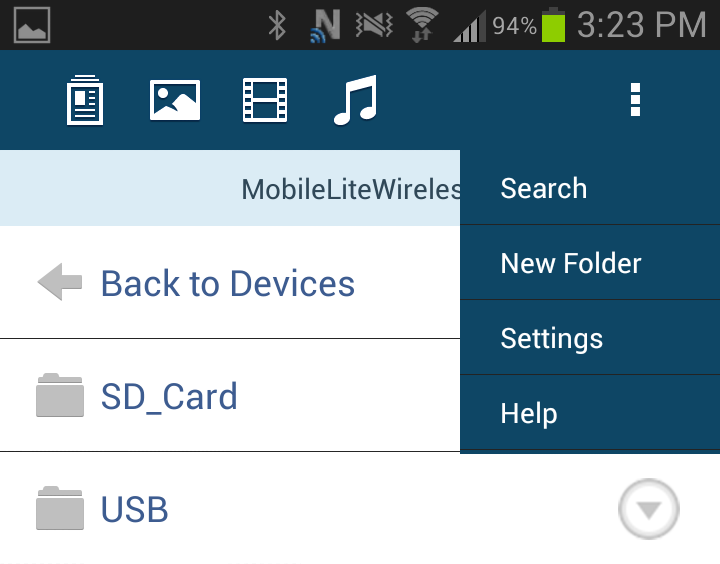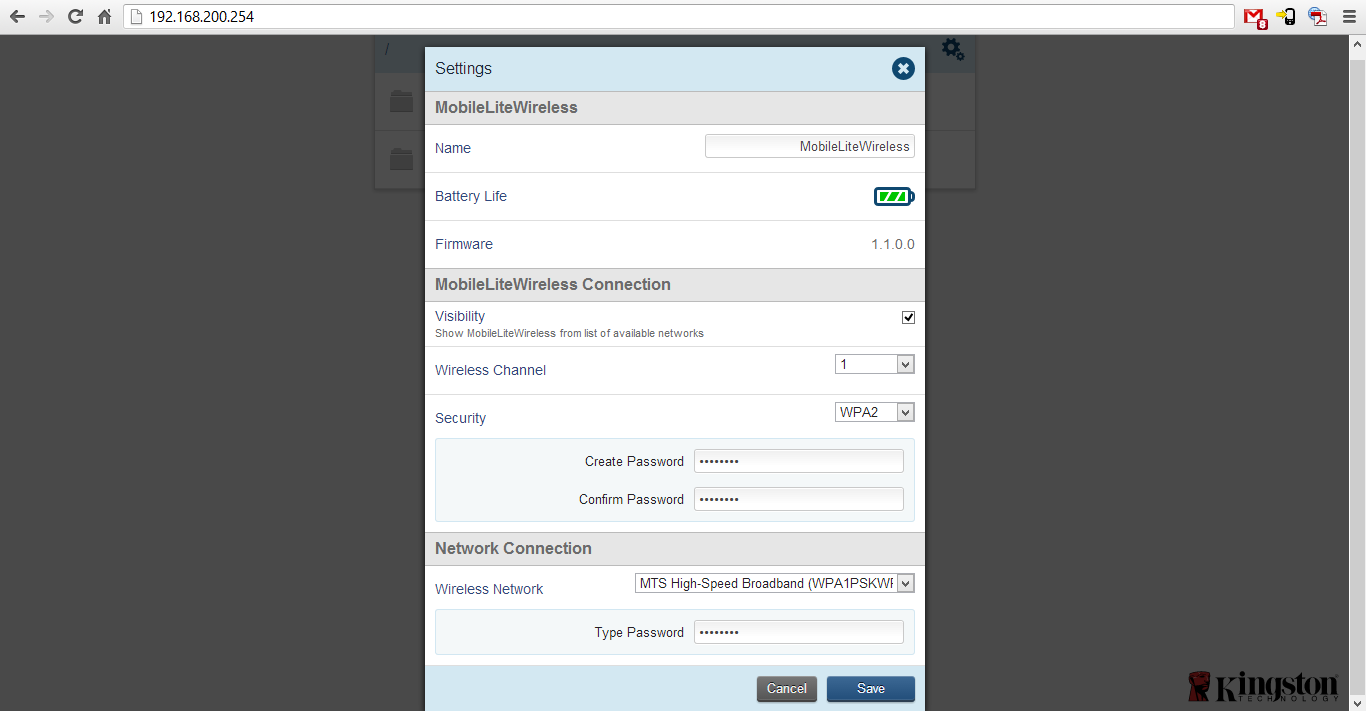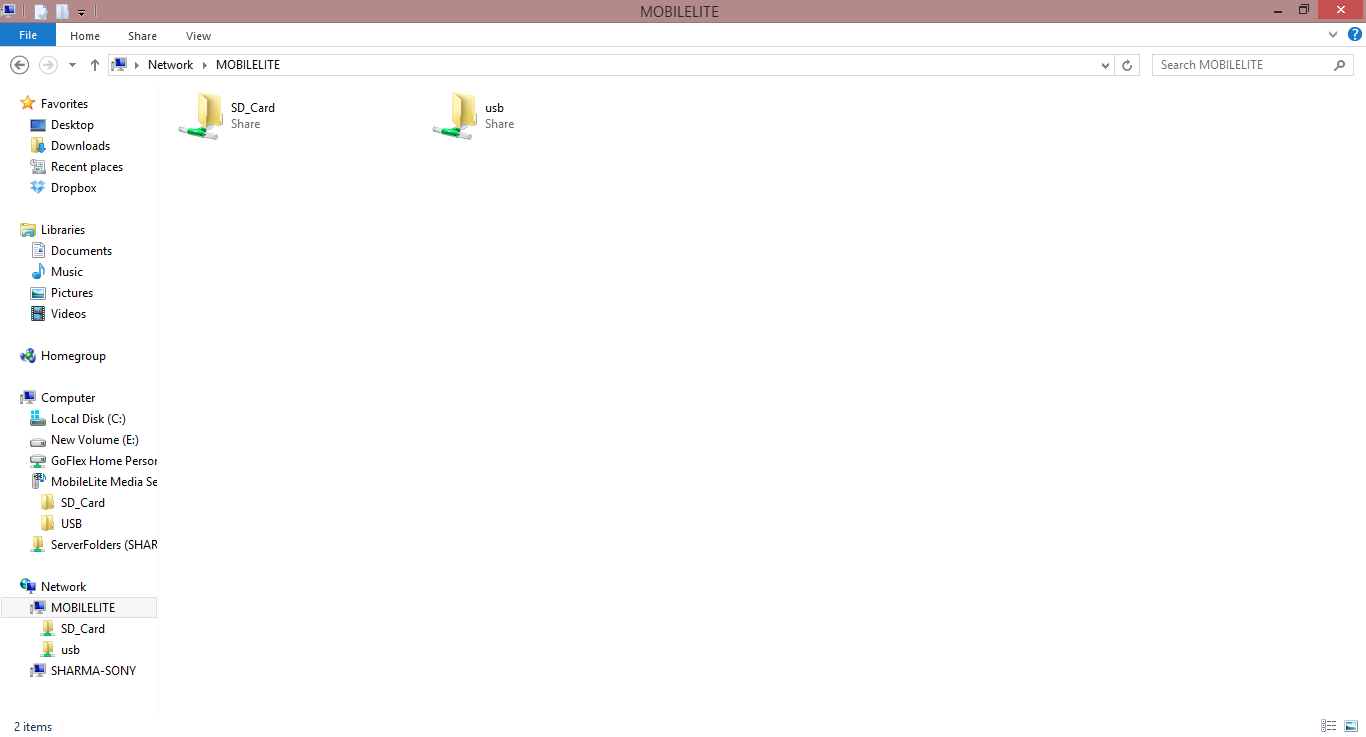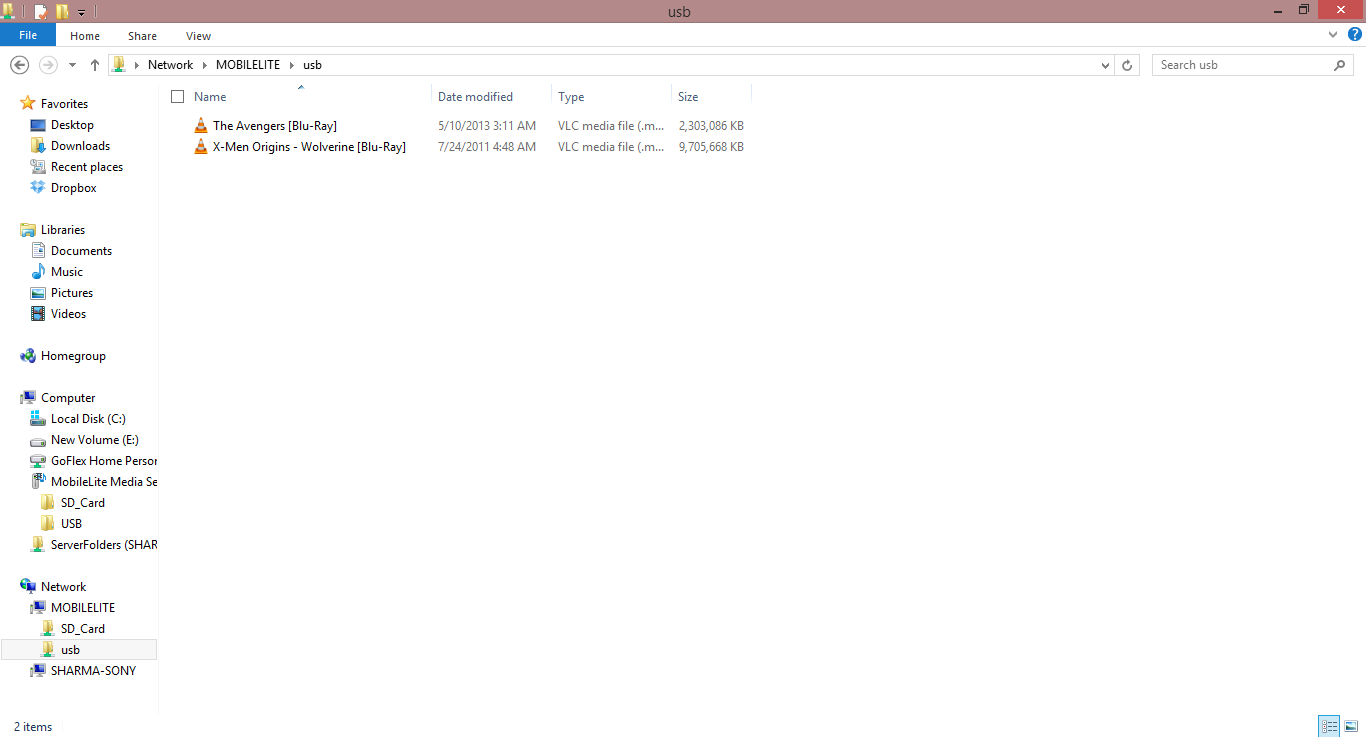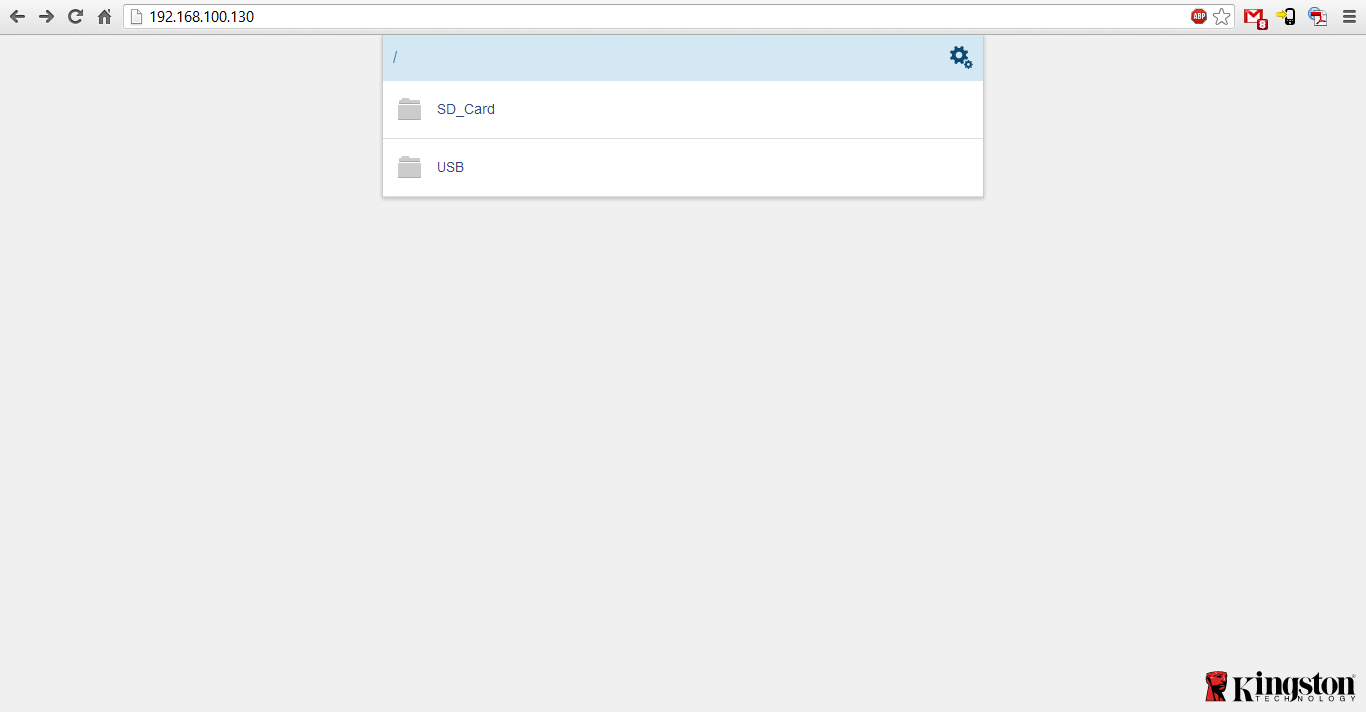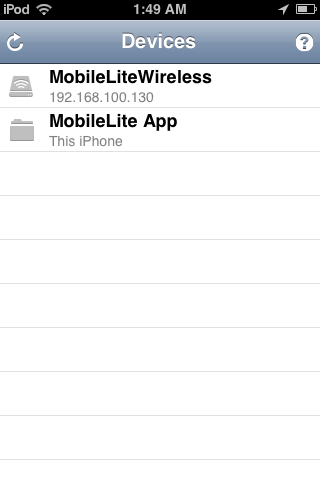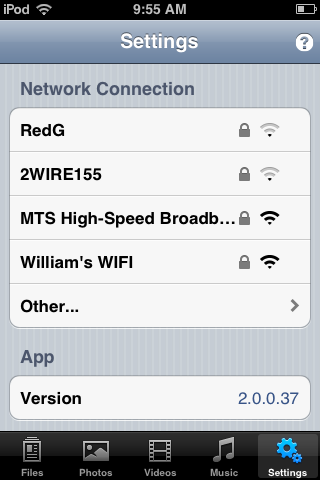WINDOWS/OTHERS OS
The browser-based configuration for all non-iOS/Android devices is exactly the same. You input 192.168.200.254 into your browser and hit the ‘gear’ button on the top-right to go into the identical GUI as present in the other two apps. From here you get the exact same options to configure to your liking Again remember that you can only do this while logged into the ‘MobileLite’ network.
Alternatively you can use the MoblieLite Wireless as part of your LAN via the Windows explorer, provided you have private share settings activated in Windows:
Now you may be wondering why the ‘Tip’ is telling us to log back into the ‘MobileLiteWireless’ network. The MobileLite can be compared with a NAS unit – to a particular degree – and generally the wi-fi signal broadcasted is just to connect the unit to the home network, which takes over from there (for example the process taken when configuring a router). Of course we have no ethernet port, but why does the wi-fi signal stay active regardless?
Here is why. The Kingston MobileLite Wireless, among all of the other things it does, is actually a wireless client bridge/repeater/access-point! These terms tend to be used interchangeably, but to put it simply, the MobileLite allows you to connect to the internet through the signal provided by the device.
This is an excellent feature because it does not force you to only use the device, or only use the internet. Instead of logging onto the MobileLite network to use the device, and instead of having to log off that network and log back onto your home wi-fi for internet access, you can do that all through the device with one connection.
Right, moving on let us log back into the ‘MobilelLiteWireless’ network. The device will show up again in the app. For non-iOS/Android users you can input 192.168.200.254 into your browser to log back into the device. If using the home network instead, your router may assign a different IP via DHCP, which for us is 192.168.100.130; you can use either of the two (it will auto-redirect to the default).
That does it for the wireless storage mode. The other modes are much easier to follow. Going into charging/card-reader mode is quite simple by just plugging the MobileLite into an available USB port. Your machine will pick up the MobileLite, which in turn will show the devices connected to it.
Before moving onto testing and benchmarks, the battery-backup mode works primarily when the device is without an external power source (meaning it is not connected for charging). Holding onto the power button for one-second boots battery-backup, to which you connect a device for charging (smartphone, tablet, etc.). The MobileLite will stop charging once it loses its own charge, or once the connected device is at 100% power.
Remember that when using these two modes you turn-off access to the storage streaming mode. You can charge any device connected to the MobileLite regardless of mode, however. Blinking green means the MobileLite is charging; blinking orange means the connected device is charging. The streamer has indicators of green being 50% or above, orange being 25-50%, and red being 25% or above. It would have been better had Kingston added an actual percentage number via an LCD screen on the MobileLite, as these three indicator flashes indicate a ridiculously broad range of battery life.
 Technology X Tomorrow's Technology Today!
Technology X Tomorrow's Technology Today!

